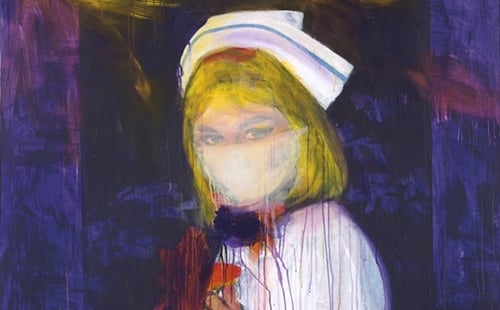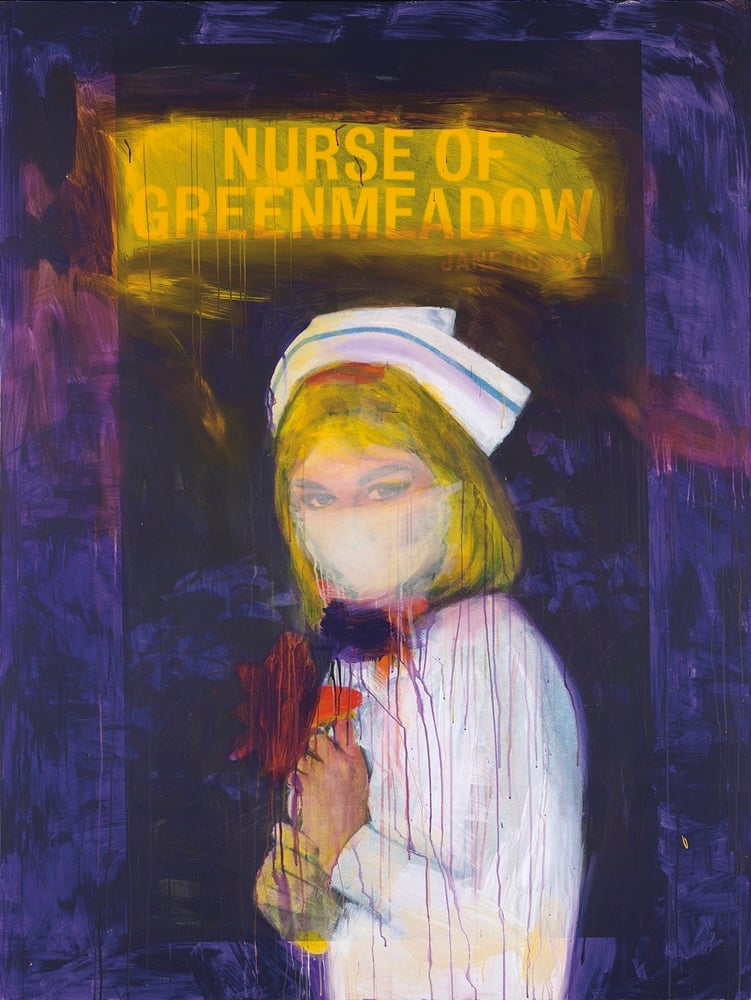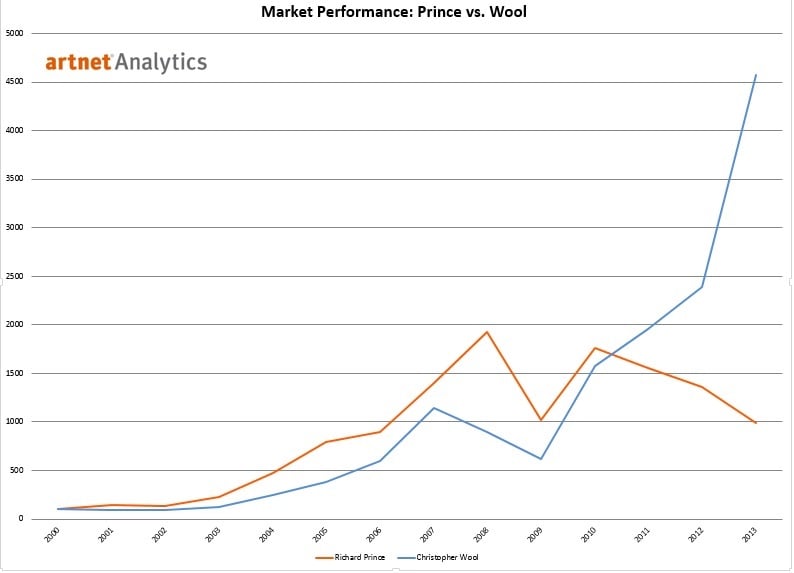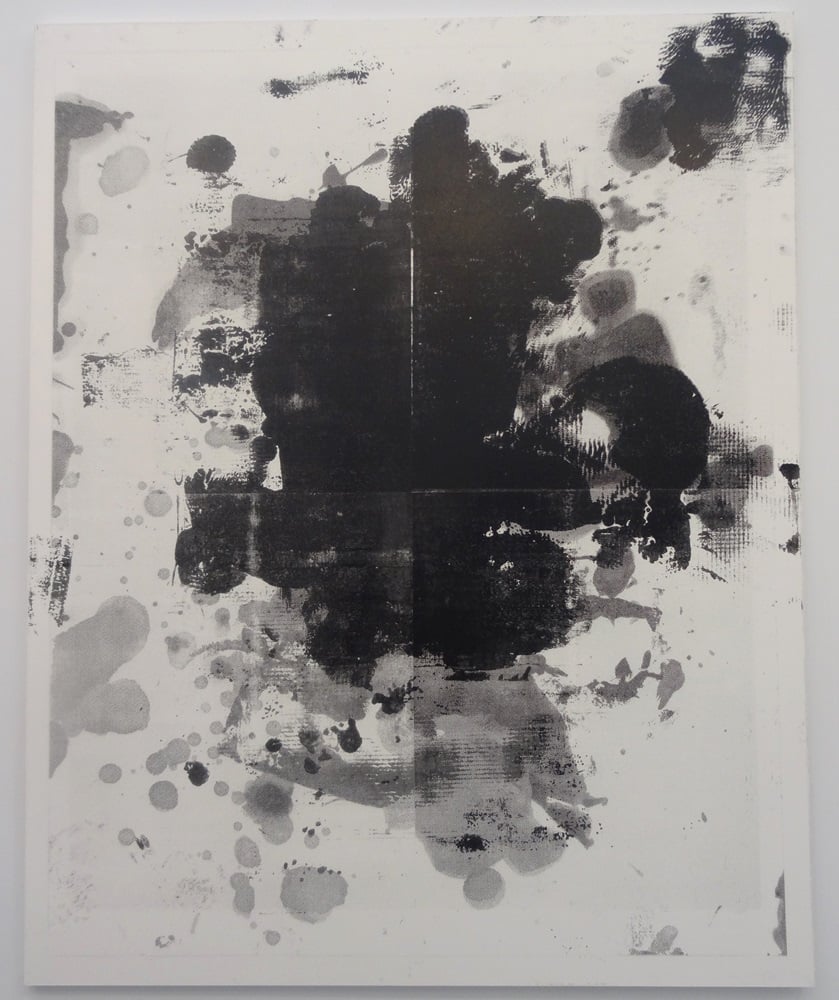Auctions
Art Market Analysis: Richard Prince vs. Christopher Wool at Auction
Which one will be crowned King of Contemporary?

Which one will be crowned King of Contemporary?

Eileen Kinsella


Richard Prince, Nurse of Greenmeadow (2002). Estimate: $7 million–9 million.
Photo: Courtesy Christie’s.
It’s hardly surprising that both Richard Prince and Christopher Wool landed on artnet’s recent ranking of the top 10 most expensive living artists in America. Wool is fresh off a major, much-lauded retrospective at the Guggenheim Museum and a steep new auction record over $25 million, set this past fall, while Richard Prince’s current show at Gagosian is only the latest feather in his cap for the artist.
It seems collectors can’t get enough. Will the momentum continue?
Virtually all aspects of their respective oeuvres will be put to the test this week when works worth tens of millions of dollars hit the auction block at Christie’s and Sotheby’s major evening and day sales of postwar and contemporary art, tonight through Thursday. For Prince, it’s 20 works from his major series: the Nurse paintings, featuring imagery appropriated from old romance novels; the Cowboy photos, with images ripped straight from Marlboro cigarette ads; the monochrome Joke paintings that feature corny punch lines (“I never had a penny to my name so I changed my name”); and the Girlfriend photos, featuring appropriated images of, you guessed it, girlfriends.
The action starts tonight with the Christie’s special auction “If I live I’ll see you Tuesday,” a new auction that was curated by senior contemporary specialist Loïc Gouzer. It includes five works by Prince and one by Wool.
“I tried to get one of the best Cowboys, one of the best Joke paintings, one of the best Girlfriends. If you have the right works, you can have this many without losing strength,” Gouzer told artnet News. “There are very few artists like Richard who have done so many different bodies of work. And his art gets fresher every day.”
The title of the sale takes its name from the 1990 Prince joke painting If I Die (the full text: “Jewish man talking to his friend: If I live I’ll see you Tuesday. If I don’t I’ll see you Wednesday). The painting itself, which is part of the sale, has an estimate of $3.5 to $4.5 million and will likely set a new record for a Prince Joke painting. The current record for a Prince joke painting is $3.2 million, set at Sotheby’s New York in 2010 for White Woman (1990), falling toward the upper end of its $2.5–3.5 million estimate.
Both Wool and Prince are “incredibly talented, historically pivotal figures and indeed good investments,” says art adviser Lisa Schiff, owner of Schiff Fine Art. The main difference, she points out, has been in the trajectory of their markets. Wool’s market “has had a very healthy, steady slow pace of growth. Prices for Richard Prince have been more volatile, shooting up from one picture and then down and up again.”
Prince, whose works seem to turn up at every major evening sale, ranks at Number 7 on artnet News’ Top 10 Most Expensive Living American Artists list, behind Wool, who came in at Number 3. According to artnet analytics, the total value of Prince works sold at auction last year was $11 million with 63 of 111 works on offer selling. The sell-through rate is 57 percent. By comparison, Wool’s auction sales totaled $80 million on a much higher sell-through rate of 89 percent; 65 of 73 works sold.
Schiff says she thinks at least part of the difference in the markets for these two contemporary stars is simply because Wool “never left his gallery—he has been working with Luhring Augustine for 25 years. He’s very selective about where and at what museums he shows. And the gallery has never pushed his prices,” she says. By comparison, Prince has moved from 303 Gallery to Barbara Gladstone and is now with Larry Gagosian.
Erratic sales have been especially true for Prince’s Nurse paintings at auction; they took off in the mid-2000s, rising from the low millions to a spike near $9 million, only to dip with the broader economic recession that hit the art market in late 2008. At the time, one source said, the drop was so steep, one would be “lucky to get $750,000” for a Nurse.
It looks like those valleys are long behind. “Prices for the Nurse paintings are back,” says Amy Cappellazzo, the former worldwide co-head of contemporary art at Christie’s who recently co-founded an advisory firm called Agency Partners. “There is high confidence for them as there is in the larger market.” Asked why they have returned with such force, Cappellazzo explains “their performance depends heavily on good capital. They are sexy, and mentally appealing to many collectors, and the kind of thing that old guard collectors buy, like good Mark Rothkos. They always sell well.”
Alex Rotter, Sotheby’s worldwide head of contemporary art agrees that “there was some hype back in 2007, and prices dropped.” However, he points out, that the spike in prices was limited to the Nurse paintings and not other bodies of work. Of Prince, he says, “We’ve been testing the market privately for a while. Estimates are where they should be. There is confidence among dealers, collectors, and auction houses.” Prince’s market, he adds, is “in a much healthier place now.” In all, Sotheby’s is offering 10 Prince works at its contemporary sale series, including two in its special group of works from Adam Sender’s collection, and two in its regular evening sale, both this Thursday, May 14. The remaining six will be offered in its day sale.
Notably the current record for Prince—$8.5 million for his Overseas Nurse (2003), set at Sotheby’s London in July 2008—still stands at where it hit during the market peak. However, all 10 of the highest prices for Prince’s work at auction were set for Nurse paintings, many of which were achieved more recently, demonstrating the premium that collectors place on this series well as evidencing a comeback in prices.
Christie’s is testing that record price level with a lofty $7–9 million estimate on Greenmeadow Nurse (2002). The painting served as the lot featured on the catalogue cover for Barbara Gladstone’s landmark Prince Nurse show in 2003. Sotheby’s is not pushing the limits as hard as Christie’s for the artist’s 2002 Millionaire Nurse at its evening sale May 14; the estimate is $3–4 million. Currently the record for a Cowboy image is $3.4 million, set for Untitled (Cowboy) (2001–2002), an Ektachrome print sold at Sotheby’s New York in November 2007, arguably a sign of a peak-market price. Cappellazzo has her eye on the Joke paintings. Collecting-wise, she says, “I’m the longest on the monochrome Joke paintings. They have been undervalued. They are one of the most important bodies of work. They are radical in about 50 different ways. They still have that vitality. It comes out of irreverence but it honors high painting.”
Some might also see vitality in the 1990 Word painting by Christopher Wool being offered at Christie’s special evening sale tonight. Untitled (CATS IN BAG BAGS IN RIVER) comes with an estimate of $1 to 1.5 million, quite a markup from the $386,500 it scored just five years ago when it was sold at a Christie’s New York contemporary day sale on an estimate of $250,000 to $350,000. Market observers will be watching closely to see if the market will support this substantially higher price point.
When Wool’s Guggenheim retrospective was on view from this past October through January, one of his signature text paintings achieved a new high. In November Apocalypse Now (1988), a riff on the movie, with text reading SELL THE HOUSE, SELL THE CAR, SELL THE KIDS, sold for $26.5 million, leaping past the high estimate of $20 million at Christie’s record-smashing evening contemporary sale. That price marked a huge spike in Wool’s auction record, more than triple the previous record of $7.7 million (£4.9 million) set at Christie’s London in February 2012 for another Word painting, Untitled (1990), with text on two lines spelling FOOL. That was on an estimate of $4–5.5 million. Cappellazzo says it is a case of “two completely different markets,” noting that the type of collector pursuing Apocalypse Now is “trophy hunting rather than looking at an artist’s career in an encyclopedic manner.”

Auction prices for Richard Prince compared with those for Christopher Wool. Source: artnet Analytics
In Wool’s market the majority of the high prices have been won by his Word paintings. Earlier abstract paintings, while prized by many collectors, have not yielded comparable prices on the auction market. The current record for one of these stands at $3.7 million (estimate: $1.2–1.8 million), set at Sotheby’s New York in March of 2013. At Frieze on Saturday, three of Wool’s abstract paintings were prominently displayed at Luhring Augustine’s booth. Four of Wool’s abstracts will be auctioned this week at both evening and day sales. Rotter says Wool has “had a much slower career. He’s considered historically important but the market hasn’t responded as much.”
But Christie’s specialist Loic Gouzer thinks supply plays a major role. “There hasn’t been a great abstract Wool at auction. The day when one comes, it will definitely make a very good price. The great works from the ’90s are in private collections and no one wants to sell them. They understand very well that these works are important as a Word painting.”

A recent abstract painting by Christopher Wool, Untitled (2012), on view at Frieze New York in Luhring Augustine’s booth. Photo: Ben Sutton